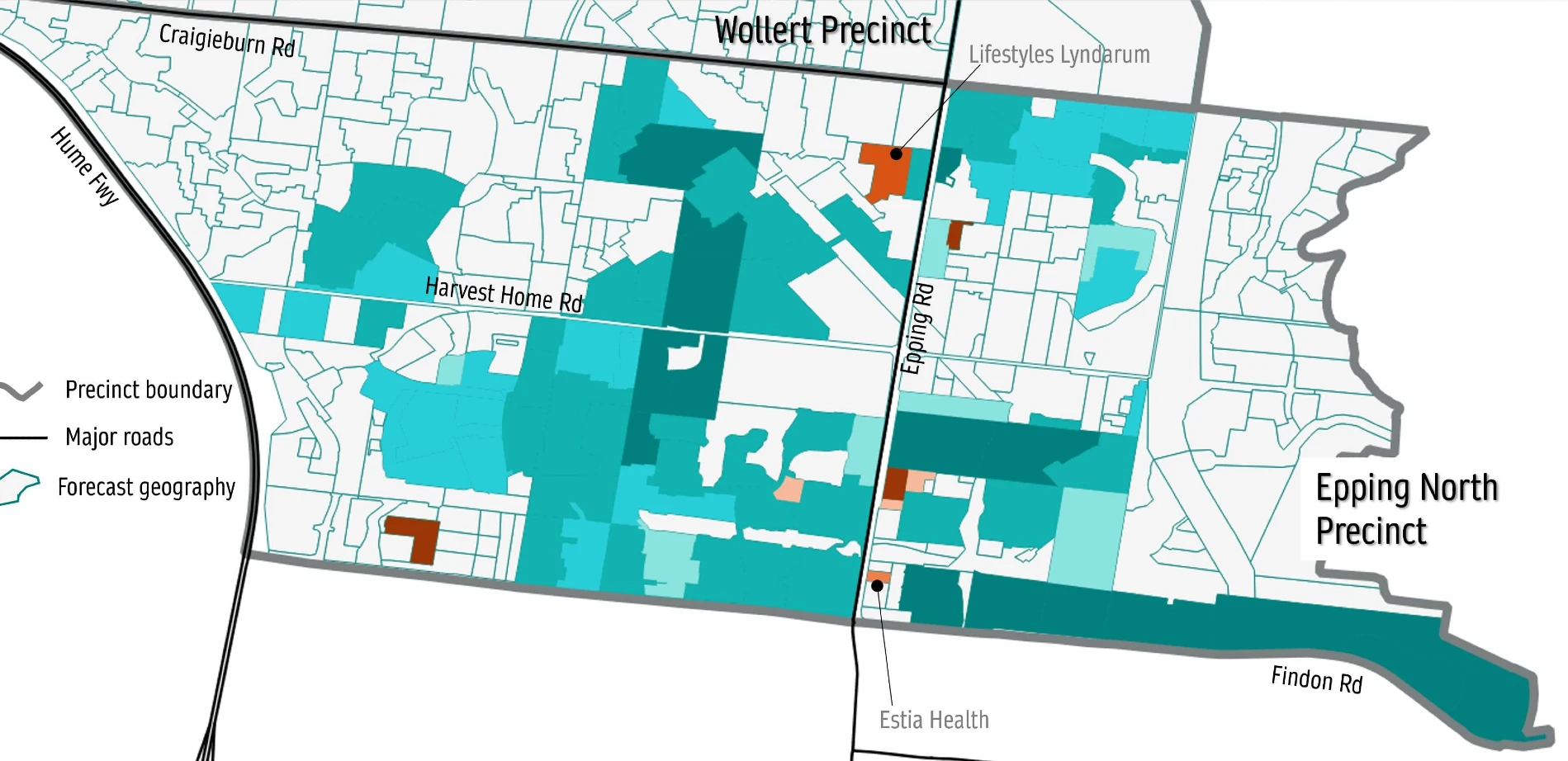
Client: City of Whittlesea
Services Provided
- Residential supply and residential capacity analysis
- Housing demand and supply analysis
- Census analysis of demographic drivers and change
- Micro-area population forecast model with adjustable supply and demand assumptions
Background
The City of Whittlesea was looking to develop a sequencing mapping tool that would integrate Council’s existing knowledge and insights on the development of greenfield areas and convert them into detailed population and household projections. The aim of the tool is to unify the strategic planning process of service and infrastructure provision in major greenfield development areas, ensuring a layer of forecast information is readily available to all staff, regularly updated, and can be easily interrogated.
The Project
The City of Whittlesea commissioned Demographic Solutions (DS) to help them create a 2016 to 2051 micro-area population forecast model for Council’s Infrastructure Prioritisation tool. This in-house micro-area population forecasting model would be based on Council development staging and demographic assumptions to produce ‘baseline’ population and household forecasts. DS extended the bounds of the model by developing one that would also respond to the ongoing changes occurring within the City of Whittlesea. The model allows for update to development and demographic assumptions which will permit Council to have forecasts for different scenarios.
How was Demographic Solutions Involved?
- Development of micro-area forecast geographies which was used towards the model’s output component. This will be incorporated into the Infrastructure Prioritisation Tool for analysis.
- Development of supply and demographic assumptions from 2016 to 2051 for all micro-area geographies.
- DS created the population forecast bottoms-up model allowing for the Council to update and vary supply and demographic assumptions.
Results
- Demographic Solutions conducted an introduction workshop with key representatives from the Council to discuss project expectations, assumptions, project milestones among other topics of importance.
- A demonstration model was initially presented, providing the involved stakeholders an opportunity to discuss the methodology undertaken in greater detail and highlight any potential concerns with the approach used.
- The feedback was incorporated into the final model which was presented along with relevant datasets, the methodology report and a user guide, as requested.
- DS will update the base data for the forecast model when all 2021 data becomes available.
